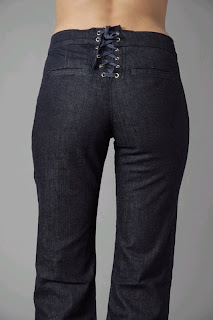The search for meaningful work seems to be a defining experience of young adulthood, and certainly fires up the ranks of indie entrepreneurs. Dissatisfaction with how this search is going is so prevalent that there's even a word for the malaise.
If there's anything I truly want - any reason I get my butt in gear to write this blog - it's the dream of getting closer to a fulfilling, world-bettering career.
But what if this longing for work that makes a difference is really a longing for something else?
Penelope Trunk, career blogger extraordinaire, sifts through the psychological and economic research on happiness and summarizes it as follows:
So you don’t have to make yourself crazy about finding the perfect job. All that stuff about how you need to find a job that you love is overstated. “Some people don’t seek fulfillment through their work and are still happy in life. All options are legitimate and possible,” says Amy Wrzesniewski, professor at the Stern School of Business at New York University.
What does matter, then, according to the scientists? Your level of optimism and your relationships, especially your romantic relationship.
If you even consider dethroning work as the #1 or #2 driver of life satisfaction, you start to ask: What made everyone think career was so important in the first place? And what exactly are we longing for when we dream of starting our own business or finding work that expresses who we are?
I've started to wonder how much our generation's embrace of career as salvation -- and craft as an additional path to fulfillment -- is a spiritual journey more than anything else. Of course, I'm certainly not the first one to have that idea. But I still find that there is a passion for the moment when we are finally able to live on our own terms, when our art or creativity becomes our livelihood. And maybe there's something delusory about putting that much hope on an income stream.
Building a rockin' small business could make your life better, but it's not likely to lead to the fundamental shift that so many of us are craving.
Pursuing your creative impulses or starting your own business certainly aren't pointless and futile -- in fact, the people least susceptible to burnout are serial entrepreneurs. But I am beginning to wonder, for myself if for no one else, if I haven't been expecting too much from work and acts of individual self-expression, and not focusing enough on the importance of relationships and a commitment to spiritual inquiry. Read more!






